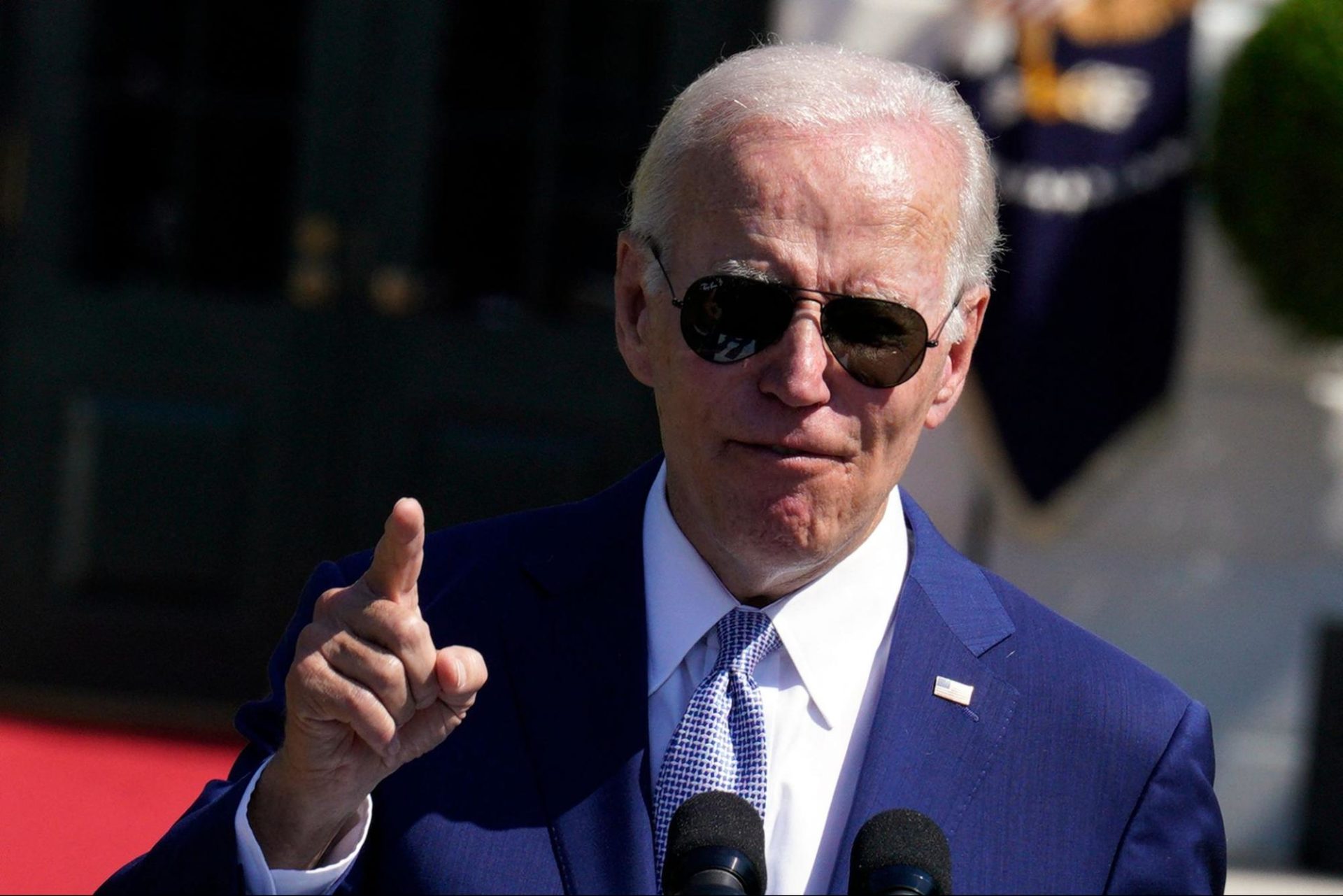U.S. finally passes semiconductor subsidy bill, but it’s not going to help competition with China
The new CHIPS and Science Act will help America advance its indigenous semiconductor industry. But it’s not going to make the U.S. any less dependent on Taiwan or any more competitive with China, argues Paul Triolo.

With much hoopla and rejoicing in Washington, the long-suffering and innovatively named Creating Helpful Incentives to Produce Semiconductors (CHIPS) Act, now renamed the CHIPS and Science Act, was passed in late July and sent to President Biden for his signature.
Biden signed it on Tuesday. The bill had bipartisan support (unusual for Washington): Though it briefly fell victim to D.C. politicking, it finally emerged as a triumph for the Biden administration.
However, the number of mischaracterizations, half-truths, and outright disinformation in media and pundit discussions on the bill must have set some kind of record. Let’s examine some of the ways the goals of providing subsidies and incentives to onshore advanced semiconductor manufacturing were portrayed by Congress, the administration, and the media over the past two years:
A brief history of CHIPS and fears of an Asian silicon planet
When the CHIPS Act was first proposed in 2020, the justification for the bill almost immediately became intertwined with growing fears in Washington about technology competition with China. But at its most basic level, the arguments of the U.S. government, industry, and academic proponents for the bill were based on the fact that it would be a good idea to jump-start domestic manufacturing of advanced semiconductors to boost U.S. innovation capacity. And it is a reality that all developed countries with significant semiconductor industries subsidize advanced manufacturing. The focus initially was solely on Taiwan Semiconductor Manufacturing Company (TSMC), but it quickly became apparent that there would be a need to expand incentives and make them available to any company interested in siting a facility on U.S. soil.
This is true of Taiwan, Japan, South Korea, Germany, China, Malaysia, the Philippines, and Israel, according to a 2019 OECD study. It is, of course, true of China, too. Governments have long seen the advantages of maintaining some level of advanced manufacturing at home, and the U.S. had been an outlier, with no sustained effort to attract or keep companies in U.S. manufacturing at the cutting edge of semiconductors. When America’s “national champion,” Intel, fell behind in the intense competition, Washington officials began to take notice.
U.S. officials in both the Obama and Trump administrations also began to pay attention to China’s subsidies for the semiconductor industry, including the massive China Integrated Circuit Investment Industry Fund. Reaction against it was part of the motivation behind the U.S. Section 301 trade investigation launched in 2017, which some see as an attempt by some U.S. politicians to “out-China China” by providing subsidies for semiconductor manufacturing and high-tech R&D.
But it was not just fears about China that echoed in the corridors of Congress, particularly in the Trump Commerce and State Departments: It was Asia. Washington realized that the bleeding edge of chip manufacturing was now in the East and not at home, where the U.S. share of global semiconductor manufacturing sank from 37% in the 1990s to around 12% in 2021. Hence, the CHIPS Act.
After considerable interagency and industry discussions on what should be included, Washington passed the CHIPS Act as part of the Fiscal Year 2021 National Defense Authorization Act (NDAA). The debates over the past year have been about how to pass funding of the bill as part of an omnibus bill that included many other unrelated pieces of legislation. The final CHIPS and Science Act included portions of bills originally included under the Senate-passed U.S. Innovation and Competition Act (USICA), and the House-approved COMPETES Act, with some modifications.
Like China or against China?
But almost from the beginning, the fact that the U.S. would now provide subsidies, like China, became confused with the idea that the CHIPS Act was about competing or countering China in the semiconductor space. Even in the run-up to the bill’s signing ceremony, media stories talked about boosting U.S. competitiveness with China in the semiconductor arena: In the hyper anti-China atmosphere in Washington, that sounded better than “matching China’s subsidies,” which was unlikely to happen in any case. The competing and countering narrative has been repeated over and over by various parties over the past year.
The only problem with this is that the U.S. is not really in a competition with China in any subsector of the vast semiconductor industry. None. Nada. And not for the foreseeable future, either, except maybe in one area of the memory sector — but even here, the main competitors for U.S. firms are South Korean, not Chinese.
As I wrote in a 2021 paper for American Affairs, Chinese firms are heavily dependent on imports of semiconductors across the board: Imports accounted for over $400 billion in 2021 and have been going up, not down. China is a long way from being capable of significantly exporting domestically developed chips. Chinese firms are even further behind their Western counterparts in all areas of semiconductor-manufacturing equipment.
And the CHIPS Act is also not about countering China, because the bulk of the funding is directed at attracting advanced manufacturing companies — TSMC and Samsung, for example — which never had plans to bring cutting-edge processes to China.
The initial and continued focus of Congress’s push to fund the CHIPS Act is, in fact, cutting-edge semiconductors, below the 7 nanometer (nm) node. Currently, and for the foreseeable future, there are zero Chinese companies that will compete in this space.
The real China connection to the CHIPS Act is actually all about Taiwan, and specifically TSMC. Washington realized in 2019 and 2020 that TSMC was responsible for over 90% of advanced chip manufacturing and over 50% of global foundry capacity. In addition, Washington national security hawks were convinced that Xí Jìnpíng 习近平 intended to act on Taiwan by 2027 or 2030, despite no evidence that Xi or China had, or have, a timetable for reunification. The need to replicate some of the capacity that TSMC commands on U.S. soil, before an escalation between China and Taiwan could potentially remove that capacity from the global market, became the real driving issue behind the new legislation: U.S. Commerce Secretary Gina Raimondo has called the dependence on TSMC “untenable and unsafe,” and a “Sputnik moment for America.”
Three problems with the CHIPS Act memes
There are several major problems with this approach and analysis. First, TSMC and its founder, Morris Chang (張忠謀 Zhāng Zhōngmóu), have been reluctant to site advanced manufacturing facilities in the U.S., citing costs and doubts about the long-term commitment, which include hefty government and industry policies. As of 2022, there is no sign of any political will that would make this possible.
Even after TSMC agreed to build a less-than-cutting-edge facility in the deserts of Arizona, before Congress has passed and funded the CHIPS Act, Chang and other TSMC executives regularly cast doubt on the U.S. ability to support an advanced manufacturing ecosystem: Commercial costs are somewhat comparable with Taiwan’s, sufficiently trained personnel are harder to come by, and ongoing subsidies and incentives are not guaranteed. Chang has called the bid to onshore manufacturing “a very expensive exercise in futility,” and said that current TSCM chairman Mark Liu (劉德音 Liú Déyīn) made the decision at the insistence of the U.S. government. With CHIPS Act funding set to expire in 2026, the clock is also ticking on this experiment, as $39 billion will not be enough to make a modest dent in the U.S.’s dependence on Taiwan and South Korea for advanced manufacturing.
Second, there is a lack of clarity around what the end goal really is for reducing U.S. dependence on TSMC. No one has publicly articulated what a long-term strategy might look like in the U.S., but the industry tried to conjure up some numbers to support what investments, such as the CHIPS Act funding, could do to offset the imbalance on chip technology. One reasonable goal would be for the U.S. — via onshoring and “friend shoring” — to be able to produce and package roughly 30% needed for key sectors (those related to national security) on U.S. soil by 2030, or anywhere that is either not China or a country potentially threatened by China. But this goal is not aimed at assessing the implications for the much-larger commercial market, which is what drives industry, innovation, and economies of scale. This type of modeling is based on a scenario where production at TSMC somehow disappears: In a best-case scenario, where TSMC, Samsung, and Intel build advanced fabs in the U.S., dependence on TSMC could go from 92% to 70–75% by 2030.
Third, and most important, is that the assumption that the unification of Taiwan with China will somehow remove TSMC from global semiconductor manufacturing is dubious, at best. Beijing’s long-known preferences are for peaceful unification — most recently reiterated, albeit in weaker language, in a new white paper on Taiwan. Maintaining TSMC’s position in the global semiconductor value-added chain would clearly be a top priority for Beijing, and the company would not survive for more than a few days without full links to the outside world, since it relies on a host of critical inputs to the semiconductor-manufacturing gigafabs from abroad. This point was stressed recently in the context of the visit to Taiwan of House Speaker Nancy Pelosi by TSMC chairman Mark Liu. Any unification that cuts Taiwan and China off from the global economy by definition makes TSMC an inoperable entity.
Given these realities, the U.S. should try to avoid a military conflict over Taiwan at all costs, and continue to support peaceful unification, as outlined in the seminal documents governing the U.S.-China-Taiwan relationship. This could include a so-called Fourth Communiqué, which would attempt to acknowledge the new geopolitical situation and preserve the status of Taiwan’s semiconductor industry as one of the linchpins of the global ICT supply chain. This could include the demilitarization of Taiwan and the surrounding Chinese provinces to build confidence in the region, instead of advocating bolstering Taiwan’s defensive posture. The unstable relationship is reflected by the fallout from Pelosi’s Taiwan visit. As Jessice Chen Weiss argues in Foreign Affairs: “Many well-intentioned U.S. efforts to support the island and deter China have instead fueled Beijing’s sense of urgency about the need to send a shot across the bow to deter steadily growing U.S.-Taiwanese ties.”
Recent U.S. policy on export controls has stopped some major Chinese technology companies from being able to use TSMC foundry services. This has exacerbated an increasingly unstable triangular relationship, made even more unstable by the Pelosi visit: As I argued in a paper for IISS earlier this year, U.S. technology policy has introduced new “unknown red lines” for Beijing, which has so far not reacted to things like extraterritorial export controls that have ensnared TSMC, and is increasingly forcing the firm to choose between supply chains for the U.S. and its allies, and those for China.
Additional pressure on this issue is likely in the coming months, as the U.S. pushes the Chip 4 Alliance, including Taiwan, South Korea, and Japan, in ways Beijing will view as another plurilateral effort to “use Taiwan to contain China.”
Many proponents of the CHIPS Act argue that it is important for the U.S. domestic economy and technology sector, regardless of what China does, or what the status of the China-Taiwan relationship is. The addition of the Science part of the Act — which folds in major funding for technology R&D for semiconductors, AI, quantum computing, and biotechnology — into the final bill is something that will benefit the U.S. innovation systems in the coming years, and should be done regardless of what competition does or does not exist with China in the technology domain.
Chinese officials and media sources have criticized the CHIPS legislation, claiming it will “distort the global semiconductor supply chain and disrupt international trade.” In August, the China Council for the Promotion of International Trade and China Chamber of International Commerce issued a document opposing the CHIPS and Science Act for “inappropriately interfering with and restricting economic, trade, and investment cooperation in global business community.” Interestingly, these are the same charges U.S. officials have made against China’s use of subsidies to support domestic firms, primarily via the IC Investment Fund. The subsidies issue more broadly is likely to be the subject of a new Section 301 trade investigation of China by the U.S. Trade Representative. China’s subsidies, which are considerably larger than those under the CHIPS Act, however, have had mixed results, and industry observers note that despite heavy subsidies in both R&D and below-market equity, Chinese semiconductor firms continue to lag behind their Western competitors.
In addition, the so-called guardrails provisions included in the final version of the bill prevent “covered” companies receiving incentives under the CHIPS and Science Act from expanding or investing in semiconductors in China or other “countries of concern” under what will likely be the 28 nm node level, for a 10-year period. Excluded from “significant transactions” are those involving “legacy semiconductors,” though the definition of legacy includes some leeway for interpretation by the Secretary of Commerce. Chinese officials see these provisions as yet another measure the U.S. government is taking to contain China’s technology rise.
Significantly, the guardrails provisions of the CHIPS Act will also impact foreign semiconductor companies operating in China. South Korean players such as Samsung are eager to receive subsidies under the U.S. legislation, likely preventing them from expanding significant manufacturing operations in China, where both 3D NAND flash player Samsung and DRAM player SK Hynix manufacture memory chips. The cumulative impact of 1) legislative restrictions on some semiconductor company investments in China, 2) existing and new export controls under consideration by the U.S., Japan, and the Netherlands on semiconductor-manufacturing gear and design software, and 3) government-backed efforts working behind the scenes to further restrict semiconductors and associated technologies, such as the Chip 4 Alliance, on global semiconductor value-added chains remain scarily unclear. These value chains before 2019 had previously seen little intervention.
Similarly unknown is the long-term impact of these kinds of interventions on the revenues and R&D and innovation capabilities of leading U.S. and other semiconductor- and equipment-manufacturing companies progressively cut off from the China market. Whatever the impact, it will almost certainly be much worse than anticipated, if there has in fact been any effort to quantify the economic costs versus the perceived national security benefits of particular policies.
What is actually going to happen
TSMC is moving forward with the new 5 nm fab in Arizona that will benefit from CHIPS Act funding. The firm recently celebrated the completion of the outer fab shell, rapidly erected between March 2021 and July 2022.
TSMC plans to install support equipment in the coming months, then ready for full commercial operation sometime in 2024. However, major questions remain, including the ultimate size of the facility, and when TSMC might introduce its most advanced manufacturing processes there: the company says it won’t introduce a 2 nm process in its Taiwan fabs until 2025 or 2026. New U.S. government funding will almost certainly be required as part of a CHIPS Act II, along with a lot of persuasion to get TSMC to put its most advanced technology in Arizona.
U.S. officials like Raimondo talk about attracting companies like TSMC and Samsung to manufacture advanced semiconductors in America. through the CHIPS Act as a national security issue. She stresses that the U.S. relies on Asian companies, primarily TSMC and Samsung, for advanced semiconductors needed for military systems; she points to how U.S. export controls have denied Russia’s military access to semiconductors, warning about the potential for “China and Taiwan to deny the U.S. military access to advanced semiconductors.” This is perhaps the most important, but usually unstated, underlying reason for pushing the CHIPS Act — getting advanced manufacturing on U.S. soil to be able to support U.S. military needs for advanced semiconductors by the middle through the end of the decade.
Perhaps Speaker Pelosi discussed these issues during her visit to Taiwan and TSMC in early August, but Taiwan and TSMC, with the China threat ironically seemingly increased in the wake of Pelosi’s visit, will remain the site of the vast majority of advanced semiconductor manufacturing, and remain in the eye of a potential hurricane, regardless of the impact of the CHIPS and Science Act up to 2026. President Biden’s tweet last week that “the future of the microchip industry is Made in America” will not change that fact, nor will the White House readout on the signing of the CHIPS Act.
We are in uncharted waters here, and the Taiwan Strait has become even more important…






